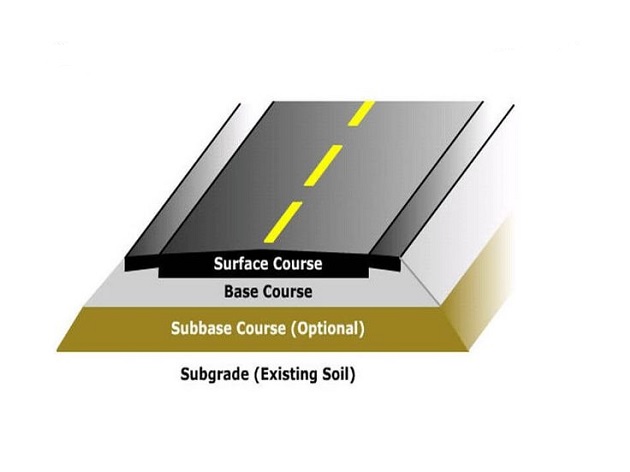Components of Higways
Highways, also known as roads or expressways, consist of various components that work together to provide safe and efficient transportation. These components are essential for the construction, operation, and maintenance of a highway system. The main components of highways include:
1. Roadway: The roadway is the driving surface of the highway and is typically made of asphalt or concrete. It is where vehicles travel and includes one or more lanes, shoulders, and medians. The quality of the roadway material and design is critical for safety and comfort.
2. Lanes: Lanes are the individual strips within the roadway that accommodate vehicles. Highways can have multiple lanes in each direction to facilitate traffic flow.
3. Shoulders: Shoulders are the areas adjacent to the roadway that provide space for emergency stopping, breakdowns, and disabled vehicles. They also serve as a buffer between the road and the adjacent terrain.
4. Medians: Medians are found between opposing lanes of traffic. They can be narrow, wide, or landscaped, depending on the type of highway. Medians enhance safety by separating opposing traffic flows.
5. Interchanges: Interchanges are designed to connect highways with other roads, streets, and freeways. They include on-ramps, off-ramps, cloverleafs, and other configurations to enable smooth transitions between roads.
6. Bridges and Tunnels: Highways often include bridges and tunnels to cross over or under obstacles like rivers, valleys, or other roads. These structures are essential for maintaining the continuity of the highway.
7. Overpasses and Underpasses: Overpasses and underpasses allow local roads or pedestrian traffic to pass over or under the highway without interacting with the main roadway.
8. Ramps: Ramps connect the highway to local roads, providing access to and from the highway system. They include entrance ramps (on-ramps) and exit ramps (off-ramps).
9. Signage and Road Markings: Highway signs, signals, and road markings provide information to drivers about speed limits, lane usage, exits, and other important details.
10. Guardrails and Barriers: Guardrails and barriers are installed along the edges of the highway to enhance safety by preventing vehicles from leaving the road or crossing into oncoming traffic.
11. Traffic Management Systems: These include traffic lights, electronic message boards, surveillance cameras, and other systems used to monitor and manage traffic flow, especially in urban areas.
12. Rest Areas and Service Stations: Rest areas and service stations along highways provide facilities for drivers to take breaks, refuel, and access food, restrooms, and other services.
13. Environmental Considerations: Highways may include features to minimize environmental impacts, such as noise barriers, wildlife crossings, and landscaping.
14. Lighting: Lighting is used to illuminate the highway at night or in low-light conditions, enhancing visibility and safety.
15. Drainage Systems: Proper drainage systems, including culverts and ditches, are essential to prevent water accumulation and erosion on the roadway.
Highways are complex infrastructure systems that require careful planning, design, construction, and ongoing maintenance to ensure the safe and efficient movement of people and goods. The components listed above collectively contribute to the functionality and safety of the highway network.

